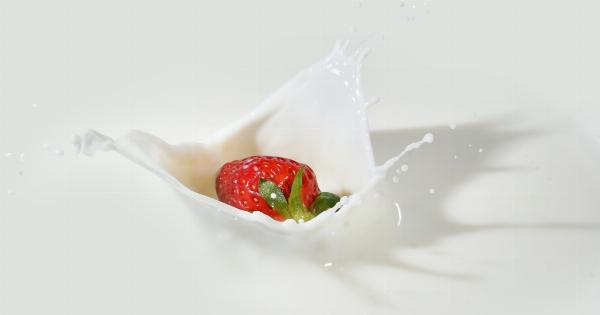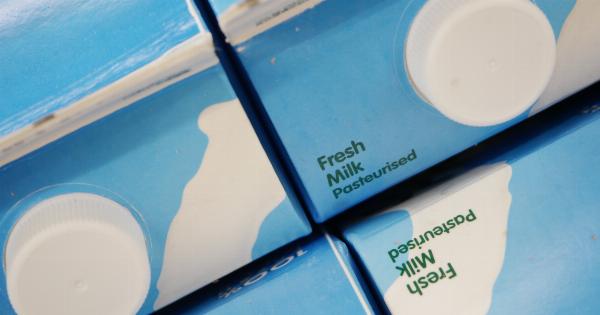When it comes to consuming dairy products, milk is perhaps one of the most widely consumed ones worldwide. Whether it’s a glass of milk, a cup of tea, or an ingredient in various recipes, milk plays a significant role in our diets.
However, like any other perishable item, milk undergoes a process called aging which can impact its quality and safety for consumption. In this article, we will explore the aging of milk, the factors affecting its aging process, and the impact it can have on consumers.
Understanding the Aging Process
Milk is a highly perishable product due to its nutrient-rich composition. It is known for its high water content, proteins, sugars, vitamins, and minerals, which make it an ideal breeding ground for various microorganisms.
These microorganisms, such as bacteria, yeasts, and molds, are responsible for the aging of milk.
From the moment milk is obtained from cows or other dairy animals, it starts to undergo changes due to the presence of microorganisms. Initially, milk contains a small number of bacteria, typically harmless ones.
However, as time passes, these bacteria reproduce and multiply, leading to the aging process.
Factors Affecting Milk Aging
Several factors contribute to the aging of milk, including:.
Temperature
The temperature at which milk is stored greatly impacts its aging process. Higher temperatures promote the growth of bacteria, resulting in a faster deterioration of milk.
It is recommended to store milk at temperatures below 40°F (4°C) to slow down the aging process and preserve its freshness.
Exposure to Light
Exposure to light, especially ultraviolet light, can accelerate the aging process of milk. The light causes the breakdown of certain nutrients and can lead to off-flavors and the degradation of vitamins.
Milk should always be stored in opaque containers or away from direct sunlight to prevent the negative impact of light exposure.
Microbial Contamination
The presence of harmful microorganisms in milk can expedite its aging process. Contamination can occur during milking, processing, or even due to unhygienic storage conditions.
Regular testing and proper sanitation practices are essential to ensure milk quality and safety.
Time Since Production
The longer the time since milk production, the greater the chances of aging. Freshly produced milk contains fewer bacteria compared to milk that has been sitting for a few days.
Therefore, consuming milk closer to its production date ensures better quality and reduces the risk of spoilage.
Impact on Consumers
The aging of milk has notable implications for consumers:.
Quality and Taste
As milk ages, it undergoes chemical changes that affect its taste and quality. The growth of bacteria can cause off-flavors and the production of compounds that alter milk’s original taste.
Consumers may notice a sour or unusual taste, indicating that the milk is past its prime.
Nutrient Value
The aging process can also diminish the nutrient value of milk. Vitamins such as thiamine and riboflavin are sensitive to light and heat, and their content may decrease over time.
Additionally, the breakdown of proteins and sugars by bacteria can lead to a decrease in nutritional benefits.
Safety Concerns
Consuming milk that has been aged beyond its recommended period can pose safety risks. Harmful bacteria, such as Salmonella or E. coli, can multiply in aged milk and cause foodborne illnesses.
It is crucial to abide by the recommended storage guidelines to ensure milk safety.
Ways to Extend Milk Shelf Life
To extend the shelf life of milk, consumers can follow these practices:.
Proper Refrigeration
Storing milk in the refrigerator at temperatures below 40°F (4°C) is crucial to slow down its aging process and maintain freshness. It is essential to check the refrigerator temperature periodically to ensure it remains within the recommended range.
Packaging
Choosing milk packaged in opaque containers or cartons prevents light exposure, maintaining the milk’s quality for a longer duration. Transparent containers should be avoided, as they allow light to penetrate and accelerate the aging process.
First In, First Out (FIFO)
Adopting the FIFO method when purchasing milk ensures that the oldest bottles are consumed first, reducing the chances of consuming aged milk.
Pasteurization
Opting for pasteurized milk not only ensures the destruction of harmful bacteria but also extends the shelf life of milk compared to raw or unpasteurized milk.
Closing Thoughts
The aging of milk is a natural process influenced by various factors. It is crucial for consumers to understand how these factors can impact milk quality and safety.
By following proper storage guidelines and being aware of the expiration dates, consumers can enjoy fresh and nutritious milk while minimizing the risks associated with aged milk.






























